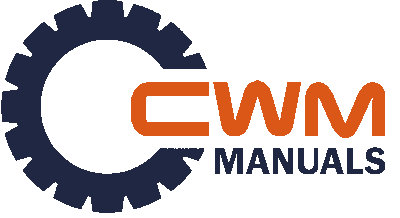Stihl Carburetors Service And Repair
This Stihl Carburetor Service Workshop Manual contains descriptions of repair and servicing procedures as well as functional diagrams of most carburetors used in STIHL gasoline power tools. The carburetor designation is stamped or printed on the body of some models (e.g. HT-7A or WT-223).
View the free Stihl online images or download the full PDF Carburetor Service Workshop Manual to service and repair or troubleshoot Stihl carburetor problems.
The carburetor has to mix fuel and air in an optimum ratio for each phase of engine operation. It prepares the mixture for vaporization by breaking it down into fine droplets. In the carburetor, fuel is atomized but not completely vaporized. The heat necessary to vaporize the fuel is taken from the components the fuel flows through, i.e. primarily the engine. Therefore, complete vaporization does not take place until the mixture reaches the combustion chamber. The absorption of vaporization heat by the fuel represents a form of cooling for the components that give off the heat.
As there is a lack of fuel, the engine does not produce its full power. Furthermore, the engine overheats because insufficient heat is dissipated to vaporize the fuel. The lack of fresh gas containing oil results in inadequate lubrication and risk of seizure.
A carburetor consists of a hollow housing which has a special internal contour, i.e. the choke tube (venturi). Engine intake air flows through this venturi. The smaller the cross-section of the venturi, the greater the airflow speed and the vacuum created. Fuel jets open into the venturi at various points from which the air stream draws fuel.
The fuel pump, nozzle or jet systems and metering devices for optimum preparation of the fuel-air mixture are integrated into or mounted on the carburetor. The flow of air, and thus engine power, is regulated by the throttle shutter.
Check valve
A check valve is installed in the metering diaphragm chamber of all carburetors equipped with an additional manual fuel pump.
Chainsaw Starting Problems
Hot start
Compared to engine idle RPM, the speed achieved by cranking the engine on the starter is very low. The gas flow speed and the vacuum in the venturi are therefore limited. Fuel and air mix poorly in this situation. Moreover, fuel is more sluggish than air. This means than considerably more air than fuel is sucked in, the mixture becomes too lean and does not burn well.
Cold start
During a cold start, the problems described for a hot start are further amplified. Cold components cannot transfer heat to the mixture. As a result, the mixture gasifies poorly and a large proportion of the fuel condenses on the walls of the components it flows through.
Troubleshooting Stihl Carburetors
Carburetor floods And engine stalls
Inlet needle not sealing. Foreign matter in valve seat or cone damaged-Remove and clean or replace inlet needle, clean fuel tank, pickup body and fuel line if necessary.
Inlet control lever sticking on the spindle. Free off inlet control lever. Helical spring not located on
the nipple of the inlet control lever. Remove inlet control lever and refit correctly.
The perforated disc on the diaphragm is deformed and presses constantly against inlet control lever. Fit new metering diaphragm.
Inlet control lever too high (relative to design position). Set inlet control lever flush with the top of body or bottom of the metering chamber.
Poor acceleration
Idle jet “too lean”. Back off low-speed screw slightly.
The main jet “too lean”. Back off high-speed screw slightly.
Inlet control lever too low (relative to design position). Set inlet control lever flush with the top of body or bottom of the metering chamber.
Inlet needle sticking to the valve seat. Remove inlet needle, clean and refit.
Connecting bore to atmosphere blocked. Clean bore.
Diaphragm gasket leaking. Fit new diaphragm gasket.
Metering diaphragm damaged or shrunk. Fit new metering diaphragm.
The engine will not idle, idle speed too high
Throttle shutter opened too wide by idle speed screw. Reset idle speed screw correctly.
Idle speed screw (LD) opened too far. Adjust idle speed screw correctly.
Idle speed screw (LA) opened too far. Adjust idle speed screw correctly.
Machine leaking. Locate and repair the leak.
Engine stalls at idle speed
Idle jet bores or ports blocked. Clean jet bores and ports with compressed air.
Idle jet “too rich”. Screw down low-speed screw slightly.
The setting of idle speed screw incorrect – throttle shutter completely closed. Set idle speed screw correctly.
The setting of idle speed screw (LD) incorrect. Set idle speed screw correctly.
Small plastic plate in valve jet does not close. Clean or renew valve jet.
Engine speed drops quickly under load – low power
Air filter plugged. Clean air filter.
Tank vent faulty. Clean or replace tank vent if necessary.
A leak in the fuel line between the tank and fuel pump. Seal or renew connections and fuel line.
Pump diaphragm damaged or fatigued. Fit new pump diaphragm.
Main jet bores or ports blocked. Clean bores and ports.
Fuel pickup body dirty. Clean pickup body, fit the new filter.
Fuel strainers dirty. Clean fuel strainers.
Delivery process
The downward stroke of the piston creates an overpressure which presses the pump diaphragm (3) towards the fuel chamber.
The pump diaphragm, therefore, reduces the volume of the fuel chamber (4). Inlet valve (6) is now pressed against its seat and closes the passage to the intake fitting (5). The outlet valve (7) is lifted off its seat and allows a certain amount of fuel to flow into the fuel port (8) which leads to the carburetor inlet valve.
Note: During each complete pump stroke an amount of fuel is deliver- ed which is equivalent to the difference in volume between the two end positions of the pump diaphragm in the fuel chamber.
Stihl Carburetor Service Workshop Manual PDF
* Online preview


Reviews
There are no reviews yet.